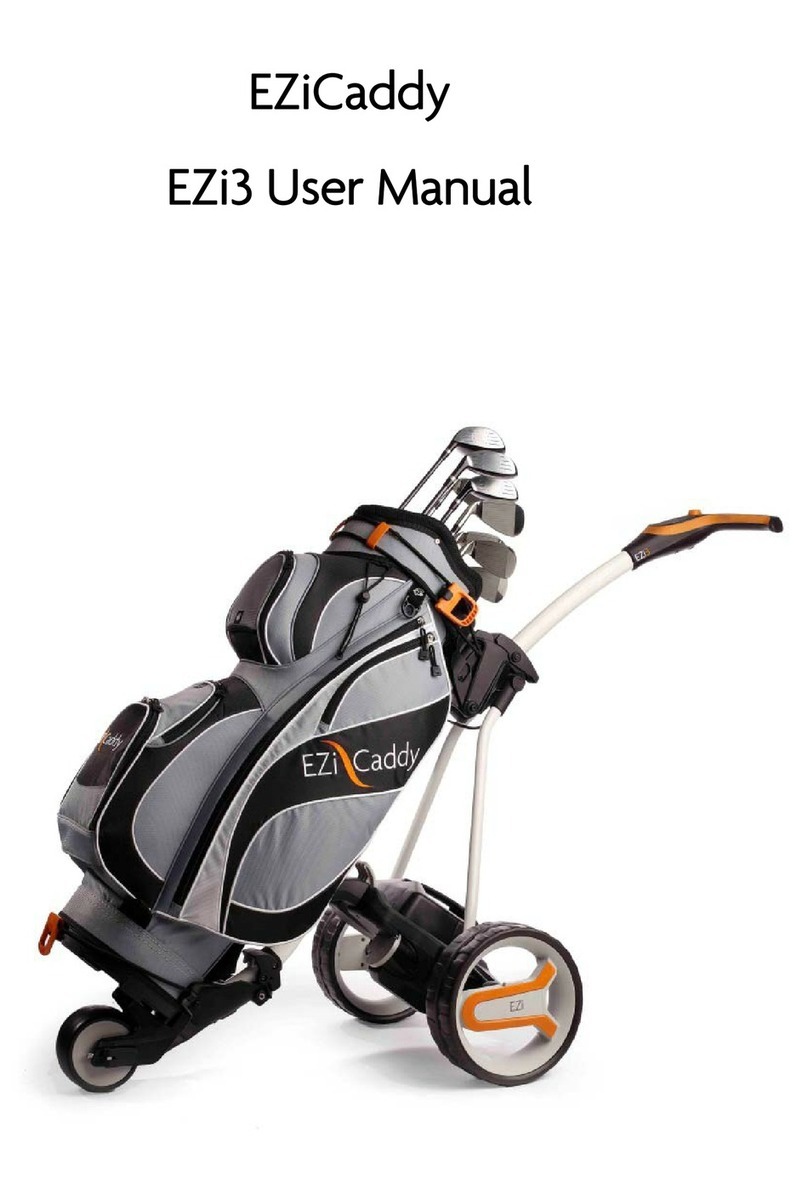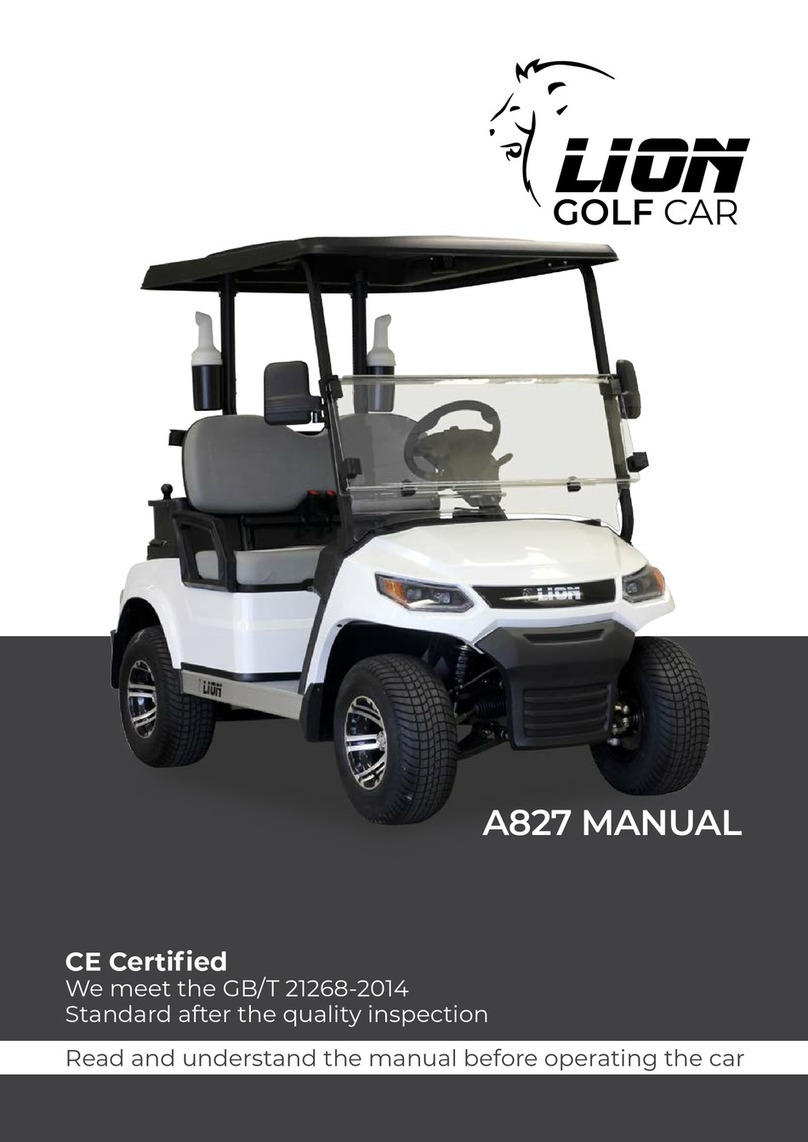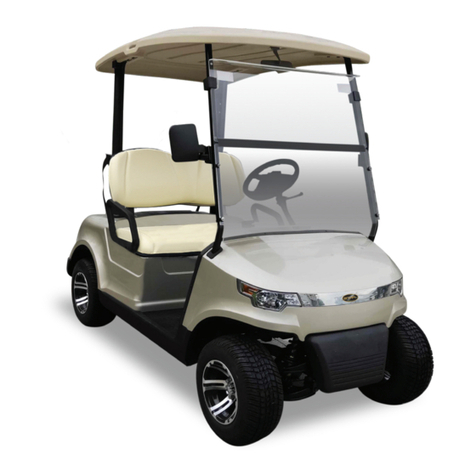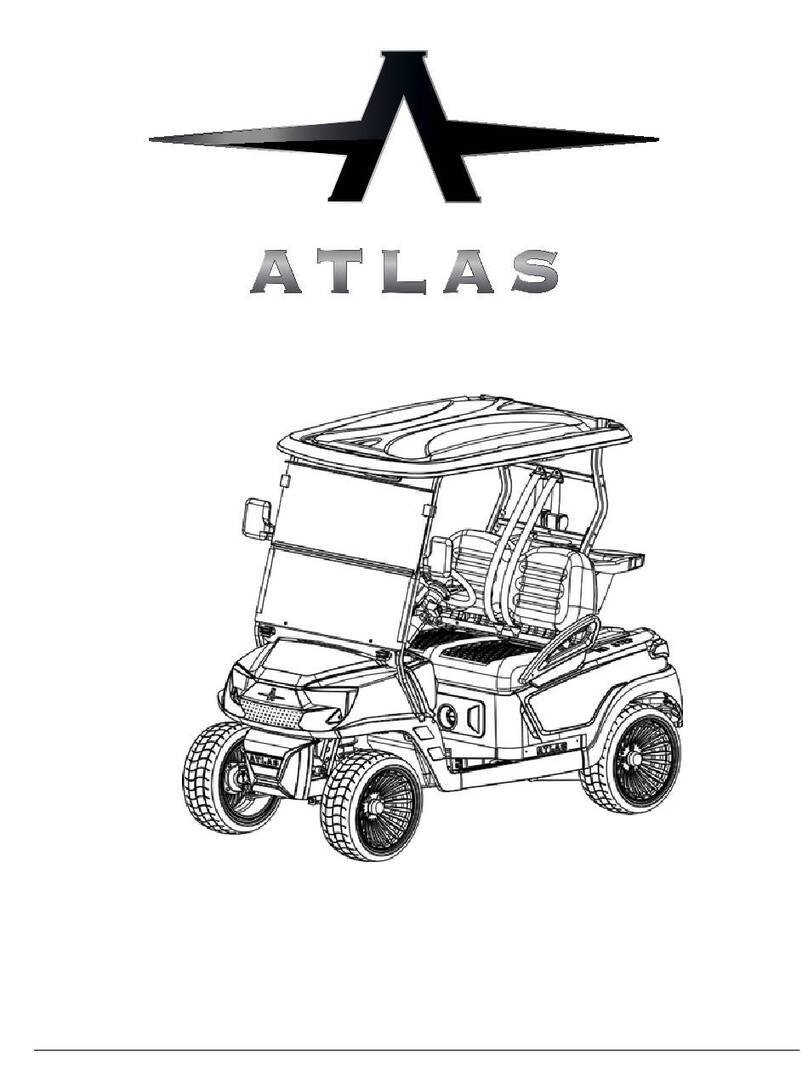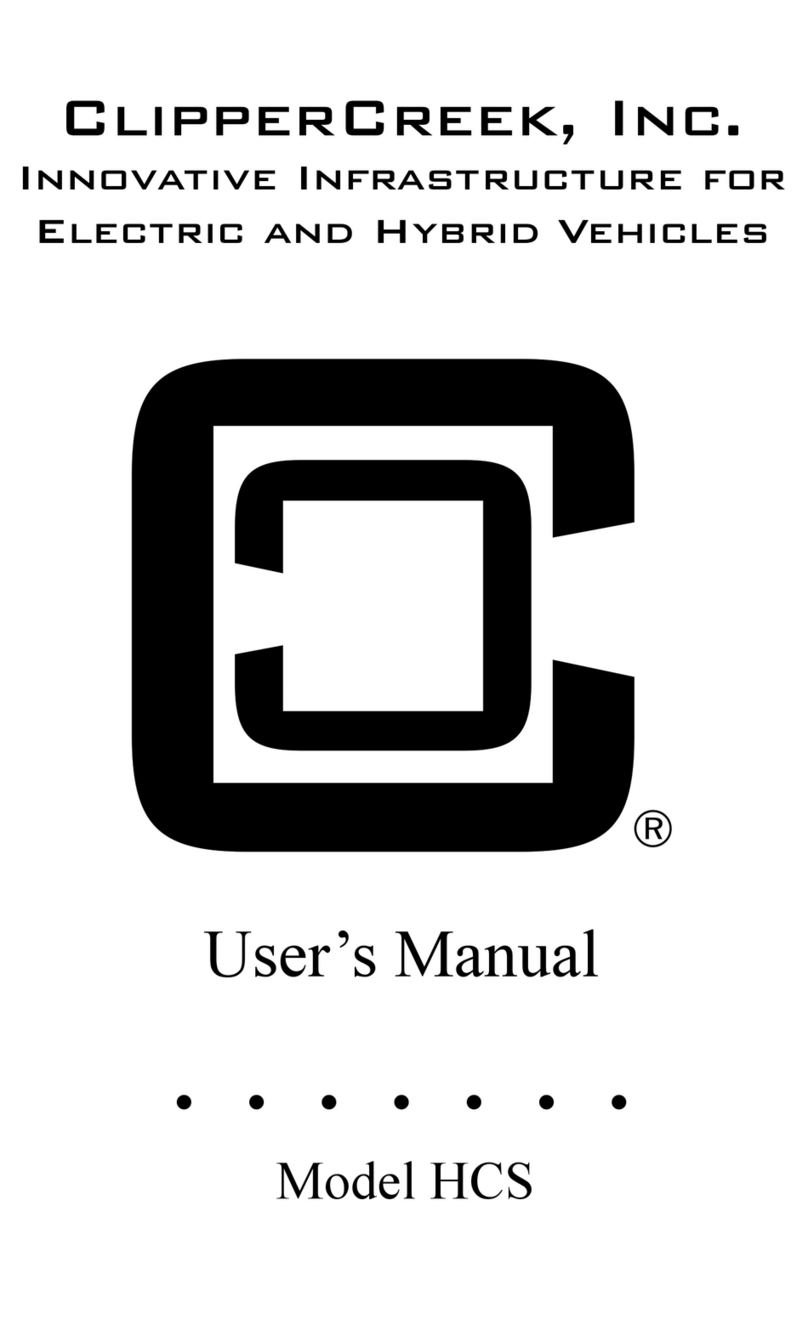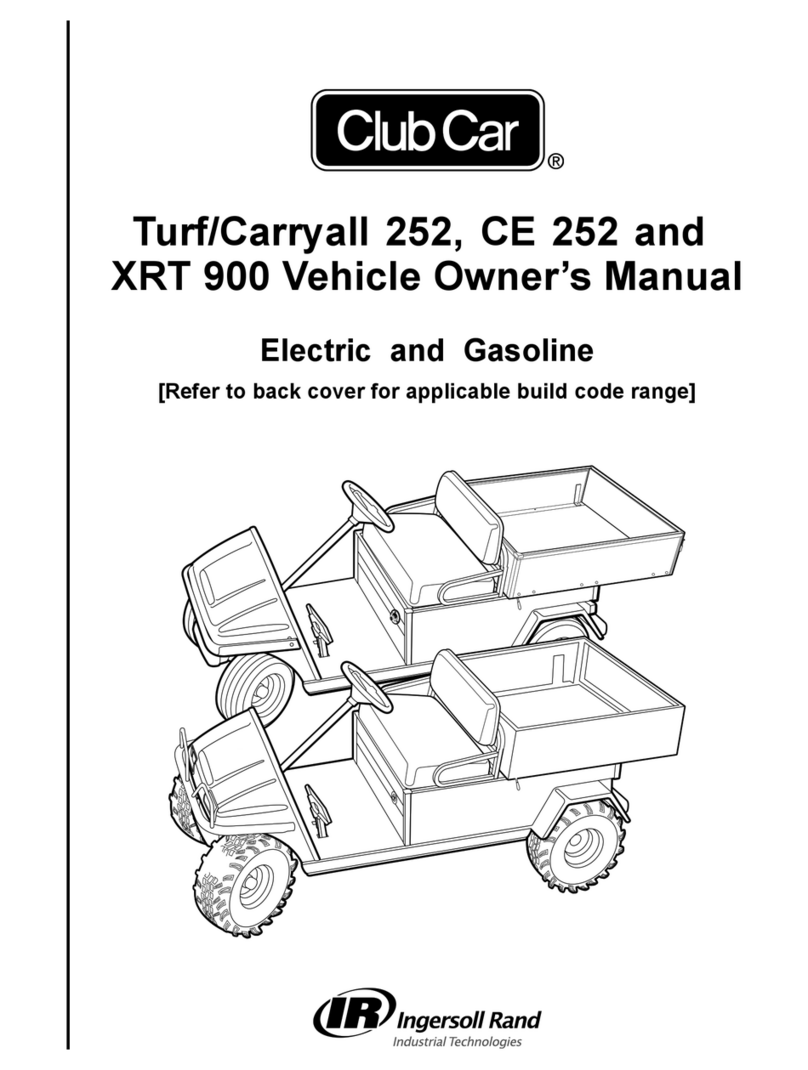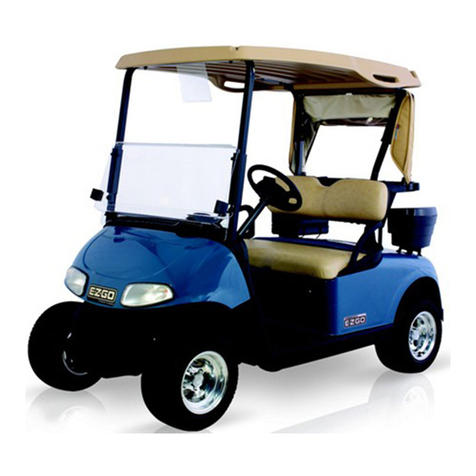Melex 4 Series User manual

Owners manual MELEX 4XX MELEX 2021/01
1
Prior to commencement to Melex vehicle start or repair works it is necessary to become
familiar with the herein User’s Manual. Any actions conducted out of accordance with the
Owner’s Manual recommendations may result in body injuries and warranty loss.
Particular attention should be paid to the recommendations preceded with the
passwords:
WARNING
Indicates direct hazard to health.
ATTENTION
Indicates potential risk of hazard to either health or material property loss, or provides
with important directions facilitating maintanance works.
„*” - systems available in vehicle optional equipment

Owners manual MELEX 4XX MELEX 2021/01
2
CONTENTS:
1. INTRODUCTION ……………………………………………………………… 3
2. VEHICLE START AND STOP …………………………...…………………… 5
3. VEHICLE STEERING SYSTEM ELEMENTS………………………………… 7
4. DAILY MAINTENANCE……………………………………...……………….. 17
5. PERIODICAL MAINTENANCE………………………………………………. 23
5.1. Batteries……………………………………………………………..…….... 23
5.2. Cargo case…………………………………………………………………... 25
5.3. Sanitary equipment (model 468 ambulance – type) …………………..……. 29
5.4. Examination of electric power installation…………………………………. 29
5.5. Fuse exchange …. ………….………………………………………………. 32
5.6. Devices of lighting and signaling installations …… ……………………… 34
5.7. Side reflective lighting – homologated models ……………………………. 39
5.8. Examination of electric system ..…………………………………………... 40
5.9. Trouble shooting …………………………….……………………............... 40
5.10. Recommended actions after activation of electric installation protections…. 41
5.11. Wheels ……….…………………………………………………..………..... 42
5.12. Lifting vehicle to replace the wheels ……………………………………….. 43
5.13. Hydraulic brake system …………………………………………………...... 44
5.14. Mechanical brake system …………………………………………………… 45
5.15. Hand brake …………………………...…………………………………….. 45
5.16. Lubrication ………………………………………………………………….. 46
5.17. Cleaning ……………………………………..………………………………. 46
6. MAINTENANCE WORKS PROGRAM………………………………………… 47
7. VEHICLE IDENTIFICATION…………………………………………………… 48
8. Other marking – homologation ………………………………………………….. 49
8.1. Cargo box capacity – information plate ……………………………………… 49
8.2. Places at risk of electric shock – information plate ………………………….. 50
9. ON-BOARD CHARGER ……………………………………………………….. 52
10. SYSTEM OF REFILLING OF ELECTROLYTE – CENTRAL SYSTEM …….. 54
10.1 HYDROLINK system ……………………………………………………… 54
11. ON-BOARD DIAGNOSTICS …………………………………………………… 56
12. EXPLOITATION DATA………………………………………………………… 58
13. END OF VEHICLE EXPLOITATION ………………………………………….. 59
14. LIST OF PARTS EXCLUDED FROM WARRANTY …………………………. 59
15. BATTERIES CONDITION FORM TROJAN (6V, 8V)………………………… 61
16. NOTES …………………………………………………………………………... 65
Mielec, 2021/1-02

Owners manual MELEX 4XX MELEX 2021/01
3
1. INTRODUCTION
Presently produced utility versions of Melex electrically-driven vehicles find wide range
of possible applications in contemporary daily life and are being constantly more and more
often used in various forms of business activity.
We are convinced that advantages coming out of Melex vehicle features will be
confirmed in vehicle use.
Prior to commencement of Melex vehicle use it is necessary to become well familiar
with the herein manual that, in general, explains design of vehicle in utility version, provides
directions of how safely and without failures make use of the vehicle and conduct maintenance
works in the range recommended for User’s own actions.
WARNING
Melex vehicle user should follow all recommendations included in the herein Manual.
Any maintenance works may be concucted by trained personnel only.
Maintenance works should be conducted with protective glasses only.
Any operations with the vehicle should be conducted in appropriately ventilated rooms
only.
The site destined for the traction battery loading on Melex vehicle has to be
equipped in ventilation that assures flow of fresh air stream not lower than 75 m3/h in
the area of battery compartment.
Melex vehicles series 4xx are being produced in three versions: cargo, passenger and
golf. Completion of Melex vehicle consists of standard assemblies and optional equipment.
Melex vehicle with AC system means a modern speed regulation system that increases
safety level of use by regaining electric energy portion during vehicle drive downhill and
braking, makes vehicle driving range higher, and reduces wear of brake shoes linings. Features
of this system are especially useful when vehicle is used in hilly terrain or big number of starts
and stops is intended while driving (possibility of programming individual settings of Speed
Controller by Producer and authorized Producer’s service center only).
Producer reserves the right to introduce changes and modernizations into particular
vehicle assemblies in order to improve vehicle driving parametres, vehicle reliability and
endurance, without necessity to notify vehicle Users thereof.
Warranty for Melex vehicle, as well as any works within the warranty period are
provided by regional authorized Producer’s representative responsible for after-sales or
factory’s service.
General safety rules
The Manual covers useful directions and information of how to use Melex vehicle
safely. Furthermore, prior to commencement to vehicle use it is necessary to become familiar
with any additional safety rules and manuals of cooperating devices.
Following both the directions included in the Manual and safety rules obligatory in a
certain region and specific conditions results in increase of User’s safety.

Owners manual MELEX 4XX MELEX 2021/01
4
Improper use of vehicle and cooperating devices may result in body injuries and be
effective in warranty loss.
Use limitations
The vehicle cannot be loaded over the accessible load capacity recommended by
Producer. Drive an overloaded vehicle may lead to motor overheating and its permanent
breakdown, damage of speed controller, burning of electric hoses, damage to drive unit,
suspension system and vehicle structure.
Vehicles equipped with motor’s overheating installation (gauge indicator) - in case the
system is activated, the speed has to be reduced on flat area (approximately 5-10km/h) to cool
down the drive unit. When you continue the driving, the motor power will be automatically
limited in AC system in order to protect it before overheating of motor.
Vehicle equipped with integrated gauge with function of battery protection, signals and
automatically reduces vehicle driving speed in case of deep discharge. Independently from the
above protection, AC system provides protection of batteries and automatic speed reduction in
case of deep discharge.
AC system (by beep signal) signalizes self-movement of vehicle (for example rolling
down the driveway), when key switch is in ON position and pot box is in rest position
.
In AC speed controller, the programmer socket is protected with special seal (stick) that
makes programmer connection inaccessible for User without previous seal tear. Any claim of
driving unit with speed controller with torn sticker will not be accepted.
The maximum accessible speed during Melex vehicle towing (for exp. vehicle out of order)
cannot exceed over 15 km/h. For vehicle with energy regain system, to tow it is necessary to
disconnect additionally source of power from the control system by disconnecting the battery
blue wire (BAT-) from battery. Towing must be carried out with the applicable rules of safe
traffic.
If the periodical control of battery level is not kept or recharging is not done in case of a
longer brake in usage, the batteries might be permanently damaged.
Driving Melex vehicle in hillock terrain
It is necessary to keep special caution while downhill drive (it is forbidden to exceed
max speed of vehicle). Moreover, during long downhill drive the operator should use the foot
brake. Hills with a slope greater than 10% should be carried out using the slow running mode
"turtle".
Driving as recommended enables longer vehicle operation between battery charging
cycles and protects speed controller and motor against excessive overload which, in
consequence, has positive influence on endurance and reliability of speed controller and motor.

Owners manual MELEX 4XX MELEX 2021/01
5
2. VEHICLE START AND STOP
Starting the vehicle
•Release emergency switch ( Not-Aus) placed on dashboard
•Release the hand brake
•Insert key into the keyswitch situated on the steering column,
•Turn the key to “ON” position,
•Set the lever of the driving direction switch (F-R switch) located on steering
column or in dashboard panel (depends of model) to “F” position (F- Forward
driving), or Rposition (R- Reverse driving)
•Press on the accelerator pedal in order to start drive.
•To slow down vehicle or to stop it, release accelerator pedal and press foot
brake.
While the F-R switch lever is set in “R” position, the acoustic signal (buzzer) gets
activated.
ATTENTION
Before starting the vehicle, disconnect the charger plug from the charging socket.
Vehicle driving technique with energy regain system
Relieving partially accelerator pedal while driving automatically activates energy regain
system which also reduces driving speed. In order to fully stop the vehicle, release completely
accelerator pedal and eventually additionally gently press the foot brake.
Excessive foot brake usage to slow down the vehicle limits functionality and effect of
the energy regain system.
Stopping and leaving the vehicle with hydraulic brake
Before leaving the vehicle it is necessary to:
•Pull the hand brake lever.
•Turn key in the keyswitch to “OFF” position and remove the key.
•Set the F-R switch lever in neutral position.
•Press emergency stop button (Not-Aus) which is situated in dashboard
The hand brake lever is located middle in the central part of the vehicle floor.
The hand brake should always be pulled up before leaving the vehicle.
In order to use the hand brake, please pull the hand brake lever up to the resistance point
(signal lamp on a control panel starts lighting, while the ignition key is ON). Once the hand
brake gets released, the signal lamp gets off. Progression of hand brake efficacy can be
achieved by earlier pressing the foot brake.
The hand brake will get released after pressing the lever’s button and dropping the lever
down up to resistance point paying special attention on getting OFF the control lamp.
ATTENTION
Pulled hand brake blocks the driving or limits the driving speed. It is forbidden to start
vehicle with pulled hand brake.

Owners manual MELEX 4XX MELEX 2021/01
6
Stopping and leaving the vehicle with mechanical brake
Drawing 2 - 1
Before leaving the vehicle it is necessary to :
•Turn on the parking brake.
•Turn key in the keyswitch to OFF position and remove the key.
•Set the F-R switch lever in neutral position.
•Press emergency stop button (Not-Aus) which is situated in dashboard (if installed)
The parking brake is located in the upper side of brake pedal.
The parking brake should always be on before leaving the vehicle. In order to use the
parking brake, please press the brake pedal and its upper side.
The parking brake gets automatically released after pressing the accelerator pedal.

Owners manual MELEX 4XX MELEX 2021/01
7
3. VEHICLE STEERING SYSTEM ELEMENTS
Model 4xx Models 443, 445, 463, 464, 465, 466, 468, 469 - with AC 48V system
Drawing 3-1
1. Steering wheel 6. Charging receptacle
2. Keyswitch with interlock 7. Road lights switch lever
3. Brake pedal 8. Direction indicators switch lever
4. Accelerator pedal 9. Washer and wiper switch lever
5. Hand brake lever

Owners manual MELEX 4XX MELEX 2021/01
8
Dashboard panel for models 4xx excluding 427, 447, 423, 433, 435 (version with integrated
display)
Drawing 3-2
1. Control panel 6. F/R switch
2. Integrated indicator 7. Slow/fast driving mode
3. Emergency switch NOT-AUS 8. Socket 12V dc
4. Emergency lights switch 9*. Signaling lamp of monitoring of
electric installation correct activity (for
homologated models)
5. Main lights switch
Model 427
Drawing 3-3
1. Steering wheel
2. Keyswitch with interlock
4. Brake pedal
5. Accelerator pedal
6. Charging receptacle

Owners manual MELEX 4XX MELEX 2021/01
9
Dashboard panel for model 427
Drawing 3-4
1. F/R switch
2. Battery discharge indicator
3. Emergency switch NOT-AUS
Model 447
Drawing 3-5
1. Steering wheel 6. Charging receptacle
2. Keyswitch with interlock 7. Road lights switch lever
3. Brake pedal 8. Direction indicators switch lever
4. Accelerator pedal 9. Washer and wiper switch lever
5. Hand brake lever

Owners manual MELEX 4XX MELEX 2021/01
10
Dashboard panel for 447
Drawing 3-6
1. Control panel 6. Main lights switch
2. Speedometer + controlling lamps 7. Emergency lights switch
3. Battery discharge indicator 8. Slow/fast drive mode switch
4. NOT-AUS switch 9*. Signaling lamp of monitoring of electric installation
correct activity (for homologated models)
5. F-R switch
Model 423, 433, 435
Drawing 3-7
1. Steering wheel 4. Pot box
2. Key switch with interlock 5. Charger receptacle
3. Braking pedal

Owners manual MELEX 4XX MELEX 2021/01
11
Dashboard panel 423
Drawing 3-8
1. Control panel 4. NOT-AUS switch
2. F-R switch 5. Emergency lamp switch
3. Battery discharge indicator 6. Forward direction signal switch
Dashboard panel 433, 435
Drawing 3-9
1. Control panel
2. F-R switch
3. Battery discharge indicator
4. NOT-AUS switch

Owners manual MELEX 4XX MELEX 2021/01
12
Integrated indicator
Drawing 3-10
Drawing 3-11
1. Service button.
Short pressing of given button causes displaying current time and date by 5 sec. Longer
pressing the button over 4 sec. causes entering into the User’s Menu.
In the indicator settings menu, briefly pressing this button starts editing or confirming the
selected option.
Pressing this button while the power is off gives you the opportunity to view information
about the temperature and battery current – refers to the li-ion battery.
2. Display brightness function button or negative function.
Short pressing of given button changes display’s brightness - there are 7 levels of
brightness. Long hold (about 2 seconds) switches the display to the negative mode.
3. Button for deleting the daily odometer and menu navigation. When the keyswitch is
switched on, briefly pressing this button resets the odometer.
4. Signaling lamp of passing lamps.
5. Signaling lamp of road lights.
6. Signaling lamp of left direction.
7. Signaling lamp of right direction.
8. Signaling lamp of low brake liquid level.
9. Signaling lamp of motor’s overheating. It lights itself together with signaling lamp
pulsing in red color.
10. Signaling lamp of pulled hand brake.
11. Warning lamp signalizing high temperature of motor, low level of batteries charging
or other failure.
Integrated indicator - in case of batteries discharge over 80% - sends the signal of
automatic vehicle speed reduction to controller, switches on the warning lamp as red triangle
and acoustic signaling device. When warning light as yellow triangle switches on, the batteries
should be charged.
Quantity of available functions of indicator depends on vehicle’s equipment.

Owners manual MELEX 4XX MELEX 2021/01
13
Drawing 3-12
1. Batteries discharge indicator
2. Indicator of momentary batteries voltage value
3. Estimated range of vehicle for present level of batteries charging
4. Battery icon
5. Current speed indication with unit
6. Counter of total kilometers
7. Counter of daily kilometers – deleted with the button
8. Moto - hours counter
9. Position lights icon
10. Clock
11. System messages
List of errors and failure (displayed and saved in the registry):
No of failure Failure’s description
8,1 Indicator used in temperature below -20⁰C
8,2 Indicator used in temperature over +50°C
8,3 Too low batteries voltage - batteries should be charged
8,4 Not in use nowadays
8,5 No voltage of power supply of speed sensor (possible short circuit to
ground)
8,6 Not in use nowadays
8,7 Output overload MOTOR TEMP (possible too high voltage at the
output)
8,8 Not in use nowadays
8,9 Memory configuration failure
9,1 Database failure
9,2 Overheated motor
9,3 Too big output overload LOW BDI (possible too high voltage at the
output)
9,4 Too big output overload PARK OUT (possible too high voltage at the
output)
9,5 Driving with pulled hand brake
9,6 Detecting move of vehicle at KSI - OFF
9,7 Deep discharge
9,8 Full charge
9,9 The occurrence of OC RESET (charging of batteries out of the
vehicle)

Owners manual MELEX 4XX MELEX 2021/01
14
10,1 Too fast driving – over 45 km/h
10,2 Reached range 0 km (deep discharge of batteries)
Integrated indicator is equipped with acoustic signaling device which switches on in
following cases:
1. Low level BDI
2. High temperature of motor
3. Driving (speed > 0) at active hand brake
4. Driving (speed > 0) at keyswitch turned off
5. Exceeding the maximum speed (set in the service menu)
Possibility of setting changes with service button by User
Longer pressing of service button over 4 sec. causes entering into the navigation menu.
User can change the following settings in “Menu User”:
1. Time
2. Date
3. Menu language: Polish or English
4. Different colors of indicator displaying. Recommended white (standard).
5. Functions of counting way of hourmeters
6. Function – INSPECTIONS - setting a service reminder after a preset number of hours or
a specific mileage
Changes of setting should be consulted with Service. Remaining data in indicator’s menu are
blocked with password before their changing.
Battery Discharge Indicator
Drawing 3-13
The battery discharge indicator located in the steering panel is a device displaying
current status of batteries charging value. The status of fully-charged batteries is signaled with
shining edge right diode (under digit “1”). During drive, paralelly to increase in battery
discharge, the shining diode moves to the left.
When the second diode from the left display side starts flickering (under digit „0”), it is
necessary to stop driving immediately and get to the place where batteries may be charged.
Further exploitation will result in disadvantageous deep batteries discharge, which is signaled
with turning on alternately of the first and the second diode on left display side. In such a
situation, it is strongly recommended to stop the vehicle immediately and start charging.

Owners manual MELEX 4XX MELEX 2021/01
15
Speedometer with Odometer and Hourmeter
Drawing 3-14
After turning key on in the keyswitch, speedometer displays the following information:
1. Number of kilometers (not cancelled – total mileage).
2. Number of kilometers (cancelled daily mileage).
3. Current driving speed (km/h) - digitally.
4. Cancelling of daily mileage.
5. Hour-meter
6. Brake fluid low level signaling lamp
7. Road light signaling lamp
8. Direction lights signaling lamp
9. Motor overheating signaling lamp
10. Passing lights signaling lamp
Drawing 3-14 – indications of hourmeter are displayed all the time on this speedometer.
Additionally the speedometer is equipped with signaling lamps.
Display backlight is activated simultaneously with position lights.
External lights switching
The vehicle external lights are switched on by use of the 3-positional external switch
located in the dashboard: position I – lights switched-off, position II – position lights switched-
on, position III – position and passing lights switched-on.
Road lights/passing lights switching
Switching over from passing lights to road lights is operated by use of the switch lever
located in steering wheel column with the external lights switch set in position III.
In homologated vehicles, the lamp is equipped with a knob to adjust the lighting angle. Angle
adjustment is only possible after opening the hood by pulling the opening lever.
Position lights switching ON
Position lights can be switched ON either when the ignition is in On position or when
the key is off the key switch.

Owners manual MELEX 4XX MELEX 2021/01
16
Emergency lights switching ON
Switching on of emergency lights can be done using switch of emergency lights located
on dashboard panel. The emergency lights can be switched on either when the ignition is on
position or when the key is off the key switch.
Direction indicators switching ON
Switching on the direction indicators is operated by use of direction indicators switch
lever located in the steering column.
Horn switching ON
Switching on the horn is operated by pulling the lever situated in the steering column to
the steering wheel.
3-point safety belts
The 3-point inertial belts are fastened by grasping the buckle located on the belt frame
and inserting into the bracket between the seat bench and the backrest.
Drawing 3 – 15
Armrests
The armrests can be lift up (option) in order to have more facilitate access to take a seat
(drawing 3-15). While vehicle is driving, passenger’s and driver’s armrests should be lower
down for safety purpose.
Wiper and washer switching
The windshield wiper is operated by switching over the lever located in the steering
column under the steering wheel. The windshield washer is operated by pulling up the lever to
the steering wheel direction.
External reverse driving mirrors
The adjustment of the mirror plane position is carried out from outside the vehicle.

Owners manual MELEX 4XX MELEX 2021/01
17
3.1. Emergency Stop Not-Aus
The main task of the emergency stop Not-Aus is to disconnect power of vehicle motor by
disconnecting the control circuit power unit.
Emergency stop, like the key-switch, switches off most of the devices on the vehicle (there are
indications about way and rules of switching off in the description of each of the electrical
device in this manual).
Combination: off the key-switch (key position “to pull out”) and pressed the switch Not-Aus
switches off all devices on the vehicle. Such a combination is recommended for operation of
batteries charging or parking, without the need of lights signalization.
Drawing 3–1-1
4. DAILY MAINTENANCE
Checking of general technical status of vehicle
Before using of vehicle you should check:
•Batteries charging status (on integrated indicator – battery discharge indicator)
•If brakes work
•If wheels are screwed and not punctured
•If lights work
•If side mirrors are set correctly
•If the indicators and signaling lamps indications confirm correct operation of vehicle and
readiness of vehicle to usage.
ATTENTION
In the case of new batteries, the battery status indicator begins to show full charge only after
several full cycles of charge.
The battery capacity is 80% in the initial charging cycles.
Charging of lead-acid batteries
After driving the vehicle, it is necessary to recharge the batteries following the steps as below:
1. Set the F-R switch lever in neutral position,
2.
Turn off the key-switch and turn on the emergency switch
3. Loosen the battery caps if the ventilation holes in the caps are clogged,
and carefully turn them off 1-2 hours after charging (applies to vehicles without central water
filling system),
4. Leave the bench seat open for charging.
5. Check the technical condition of the battery charger's power supply cables and batteries and
their connections - it is NOT ALLOWED to use the charger and start the charging process if
damage is found.

Owners manual MELEX 4XX MELEX 2021/01
18
6. Connect the power plug of the charger to a power socket with a protective contact, connect
the charging plug to the charging socket on the vehicle.
7. After recharge of the batteries (the charger signals the end of charging), pull the charger's
plug out of the power socket, pull the charger's plug out of the charging socket.
8. Directly after charging the batteries (30-60 min.) it is forbidden to make any labors at
vehicle’s electric installation (including disconnecting or connecting the installation), make
sure yourself that batteries compartment is ventilated,
9. After each charging check electrolyte level, which should be about 12mm above upper
edge of battery plate and eventually refill with distilled water (in the case of a central water
filling system, follow the system instructions).
10. Check the status of battery recharge on display.
When the battery charger signals the end of charging and battery charging indicator does not
show full charging of batteries, the batteries inspection by voltage and electrolyte density
measurement should be done.
The battery charger used for charging has to be capable to charge the batteries of
appropriate voltage 48V and capacity of installed batteries.
Check the battery charger instructions – especially pay attention on chargers work in
low temperatures.
A battery in a vehicle with on-board charger can be charged with this charger. Two
alternative charging ways are possible: by off-board charger or by on-board charger.
It is forbidden to use both ways of charging at the same time.
ATTENTION:
Within exploitation of batteries it is very important to avoid exceeding of electrolyte
temperature above +45°C, as well electrolyte density over 1.285 [g/cm3], especially during
charging process.
Stop the charging process in case the temperature is exceeded over +40°C or electrolyte
density is exceeded above 1.285 + 0,007 [g/cm3].
In cases when the temperature rises, check the condition of the battery and the charger.
In case of the excessive heat generation (lack of required electrochemical transformations)
the following must be checked:
1. Electrolyte temperature
2. Electrolyte density/voltage of battery
In case the electrolyte temperature increase above +40°C and lack of increase of
electrolyte density or voltage, it is required to interrupt charging process.
Continuous not-full charging or overcharging can damage batteries or shorten their life.
Equalizing charging of lead-acid batteries
WARNING:
Equalizing loading applies only to open-type lead-acid batteries. Don’t make any
equalizing charging in case of sealed cell batteries (GEL or AGM).
Equalizing charge applies only if the difference in density of the electrolyte between the
cells of the battery is equal to or greater than 0.030 g/cm3 or voltage difference between the

Owners manual MELEX 4XX MELEX 2021/01
19
batteries will be greater than 0.3V (voltage measurement without load after 6 hours from the
end of the charging process). During the equalization charge, you should check the electrolyte
density changes every hour and unplug the charger when the density of the electrolyte no longer
increases. The battery electrolyte temperature must be closely monitored against excessive heat.
The maximum temperature of the electrolyte must not exceed + 45⁰C.
Equalizing charging of lead-acid batteries should be done:
1. if level of electrolyte density and/or voltage is different in batteries set
2. On average once per month
Procedure of equalizing charging by recommended battery charger:
1. If the owner’s manual of charger does not describe equalizing process please follow
below instructions:
2. Charge the battery in standard way until switching off the charger (ending of full charge
cycle).
3. Switch the battery charger off.
4. Disconnect battery charger from batteries for about 20 seconds and from power source
in case of switch shortage.
5. Connect battery charger to the power source and batteries.
6. Switch battery charger on. Average time of recharge is 1-3 hours. Control the level and
electrolyte density each hour. Stop the charging process in case the temperature is
exceeded or electrolyte density is exceeded above 1.285 + 0,007 [g/cm3].
7. Repeat the steps from 3 to 5 until electrolyte density will be aligned or it is not growing
(follow this process max. up to 3 times),
8. If battery charger after re-switching on is not switching off in time given in point 6,
contact Service Department.
The percentage charging of the batteries can be verified on base of electrolyte density and
voltage measurement.
Charging
percentage [%] Electrolyte density
[g/cm
3
] for batteries
Trojan
Battery voltage
[V] for batteries
Trojan
100 1.277 6.37
90 1.258 6.31
80 1.238 6.25
70 1.217 6.19
60 1.195 6.12
50 1.172 6.05
40 1.148 5.98
30 1.124 5.91
20 1.098 5.83
10 1.073 5.75
Test of lead-acid batteries electrolyte density
Measurement of electrolyte density should be done min. once per week after charging. In case
of batteries equipped with central water filling system, the measurement of electrolyte density
can be done once per month, keeping the checking of voltage on batteries min. once per week.
Measured values must be mandatory noted in “battery status form” which is located at the end

Owners manual MELEX 4XX MELEX 2021/01
20
of this Manual. These notes will be checked in case of warranty claim and will be the base to
accept or reject the claim.
•Fill and empty areometer 2-3 times before collecting proper sample;
•Measure of all battery cells;
•If reading in each battery cell is below 1,255 g/cm
3
(for temperature 27°C) the batteries
can be not-fully charged. Charge the batteries again;
•If difference in measurements of density between cells in any of batteries is more than
0,030 g/cm
3
, the new recharging of batteries should be done acc. to equalizing
procedure.
In order to properly assess the state of charge of batteries, the measured value should be
adjusted depending on the temperature of the electrolyte in which the measurement was made.
The temperature correction tables are shown below.
Electrolyte density of reference temperature - for batteries Trojan.
Sample
measurement -13 -8 -3 2 7 12 17 22 27 32 37 42 47
-0,032 -0,028 -0,024 -0,02 -0,016 -0,012 -0,008 -0,004 0 0,004 0,008 0,012 0,016
1,150 1,118 1,122 1,126 1,130 1,134 1,138 1,142 1,146 1,150 1,154 1,158 1,162 1,166
1,160 1,128 1,132 1,136 1,140 1,144 1,148 1,152 1,156 1,160 1,164 1,168 1,172 1,176
1,170 1,138 1,142 1,146 1,150 1,154 1,158 1,162 1,166 1,170 1,174 1,178 1,182 1,186
1,180 1,148 1,152 1,156 1,160 1,164 1,168 1,172 1,176 1,180 1,184 1,188 1,192 1,196
1,190 1,158 1,162 1,166 1,170 1,174 1,178 1,182 1,186 1,190 1,194 1,198 1,202 1,206
1,200 1,168 1,172 1,176 1,180 1,184 1,188 1,192 1,196 1,200 1,204 1,208 1,212 1,216
1,210 1,178 1,182 1,186 1,190 1,194 1,198 1,202 1,206 1,210 1,214 1,218 1,222 1,226
1,220 1,188 1,192 1,196 1,200 1,204 1,208 1,212 1,216 1,220 1,224 1,228 1,232 1,236
1,230 1,198 1,202 1,206 1,210 1,214 1,218 1,222 1,226 1,230 1,234 1,238 1,242 1,246
1,240 1,208 1,212 1,216 1,220 1,224 1,228 1,232 1,236 1,240 1,244 1,248 1,252 1,256
1,250 1,218 1,222 1,226 1,230 1,234 1,238 1,242 1,246 1,250 1,254 1,258 1,262 1,266
1,260 1,228 1,232 1,236 1,240 1,244 1,248 1,252 1,256 1,260 1,264 1,268 1,272 1,276
1,270 1,238 1,242 1,246 1,250 1,254 1,258 1,262 1,266 1,270 1,274 1,278 1,282 1,286
1,280 1,248 1,252 1,256 1,260 1,264 1,268 1,272 1,276 1,280 1,284 1,288 1,292 1,296
1,290 1,258 1,262 1,266 1,270 1,274 1,278 1,282 1,286 1,290 1,294 1,298 1,302 1,306
1,300 1,268 1,272 1,276 1,280 1,284 1,288 1,292 1,296 1,300 1,304 1,308 1,312 1,316
Sample:
Temperature ºC -13 +12 +32
Measurement g/cm3 1,190 1,190 1,190
After correction g/cm3 1,158 1,178 1,194
WARNING
A special caution must be taken while you connect vehicle’s on-board charger to
110-230V power outlet.
This manual suits for next models
8
Table of contents
Popular Golf Car manuals by other brands

Club Car
Club Car XRT 950 2009 Maintenance and service manual
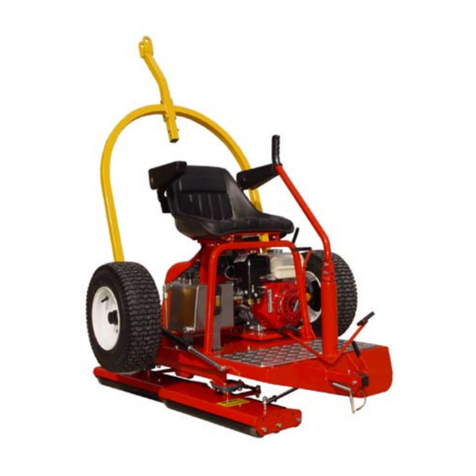
Tru-Turf
Tru-Turf RS48-11C manual
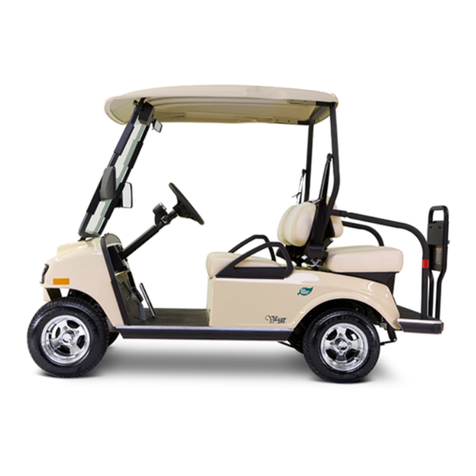
Club Car
Club Car VILLAGER 2+2 LSV Operator's manual
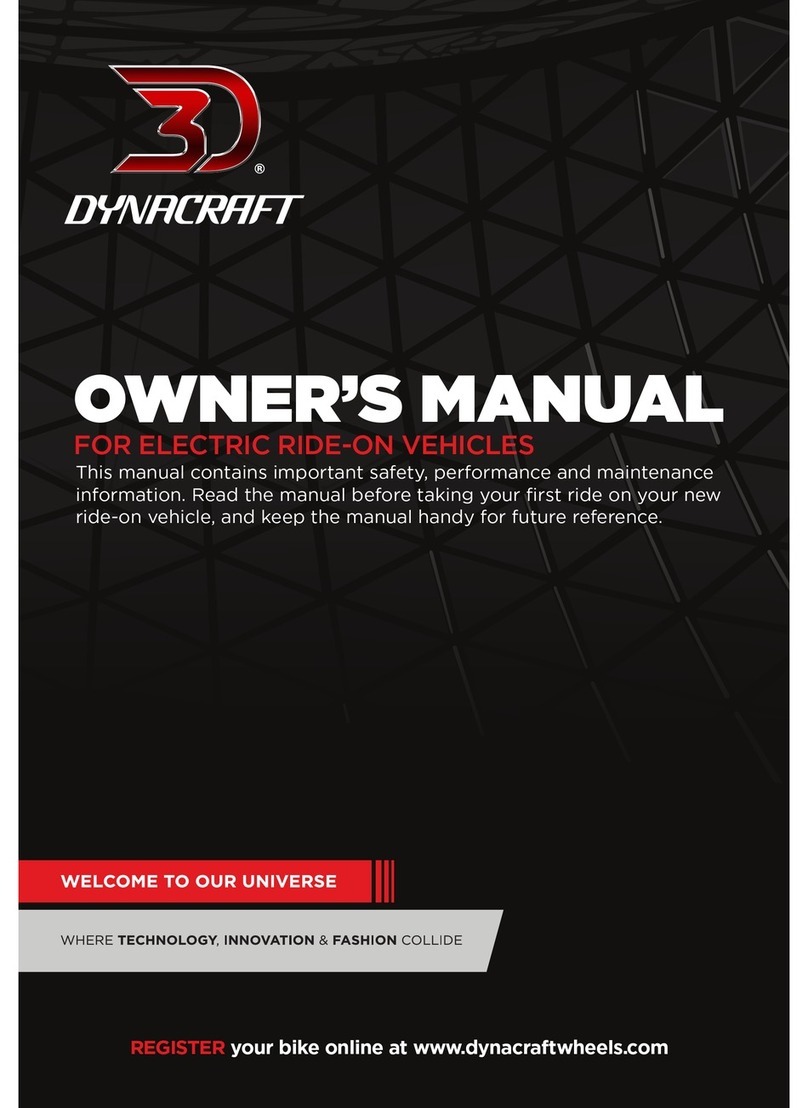
Dynacraft
Dynacraft 12V DUNE BUGGY owner's manual
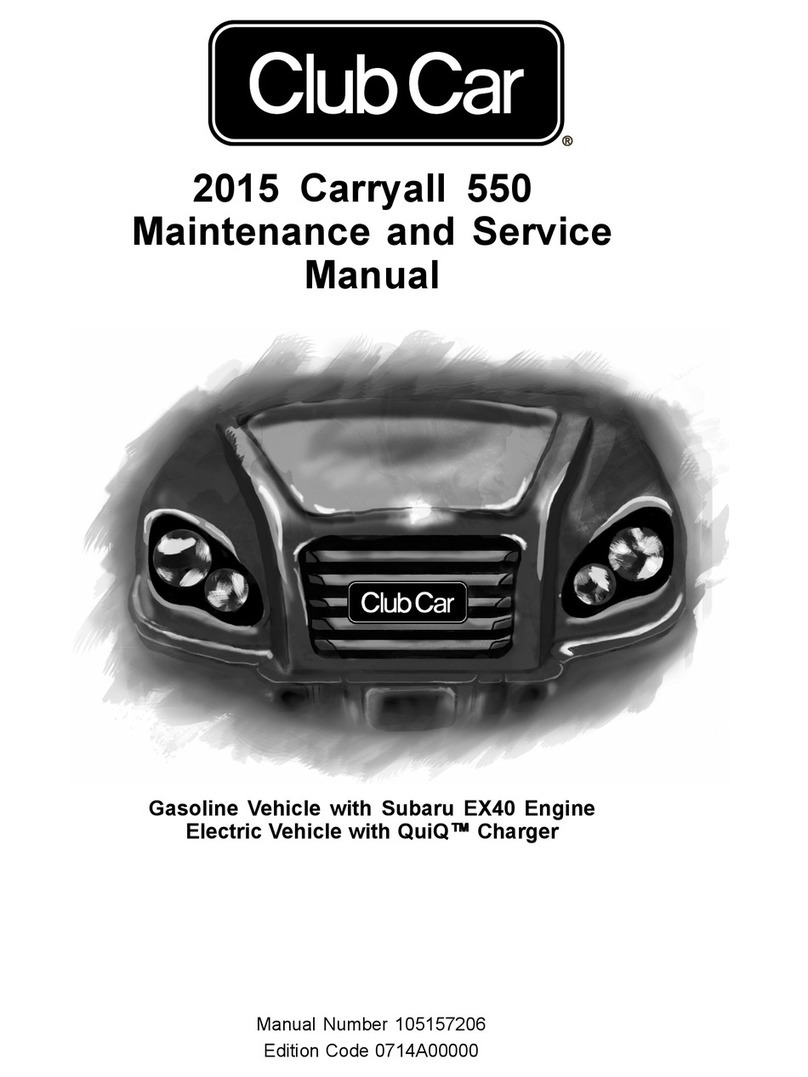
Club Car
Club Car Carryall 550 2015 Maintenance and service manual
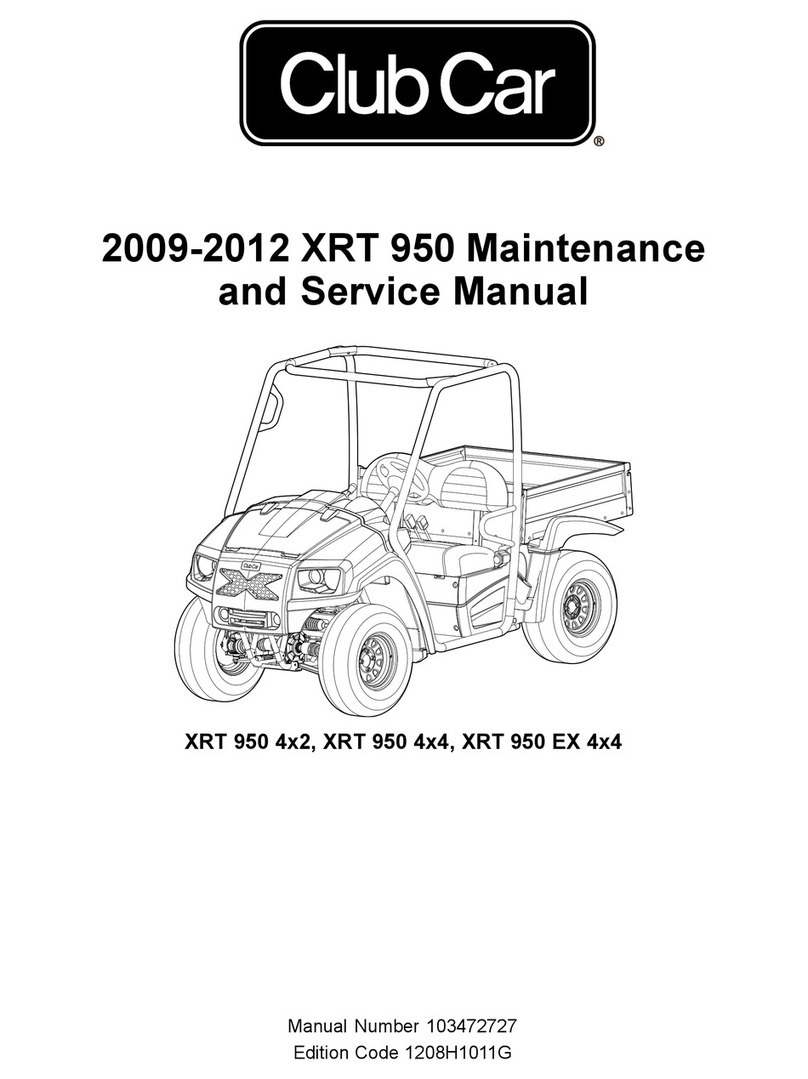
Club Car
Club Car XRT 950 2009 Maintenance and service manual
